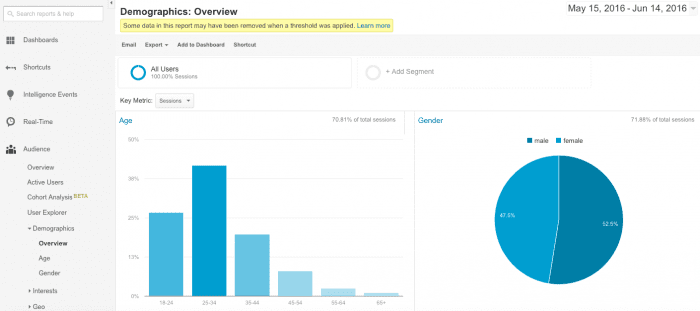Did you know this data is available? Many don't!
In a couple of recent consulting workshops with our members, I've recommended this report Google Analytics report (shown below), but the marketing managers I was working with were unaware of it and, more to the point, they thought they were really useful. I find similar in training workshops too.
What is this data and why is it useful?
The chart shows that you can see the Male / Female breakdown for your site visitors and you can also see the age breakdown too. It's useful for both B2B and B2C.

It becomes more interesting when you compare it to the profile of traditional customers acquired by other channels - this prompts questions as to whether you are reaching new audiences online or similar audiences.
The data becomes even more interesting if you compare it to the most important segments in Google Analytics. For example, how does your audience vary for mobile visitors, visitors using search, visitors arriving on different landing pages, visitors browsing different product categories, converting visitors or returning visitors?
Where to find the Gender and Age breakdown in Google Analytics?
You can find this data within the Audience reports of Google Analytics, but only if have you enabled it. The chart above shows that it's under the Audience, Demographics section in the left nav. This GA Help page explains how to enable Demographic reporting including:
- Enable Advertising Reporting Features for your property
- Enable the Demographics and Interests reports for the view
What is the source of this Demographic data?
Good question! If we're going to present this data to colleagues or clients we need to be confident in it...
The source is based on Google owning Ad network Doubleclick from which they're able to share profile information collected by publishers. The data is linked by cookies or browsers who use Google Accounts.
When explaining this you can show that Google Analytics shares the percentage of people who Google can positively identify.
So, I hope you find this interesting and more to the point, useful! Let us know how if and how you use it!







